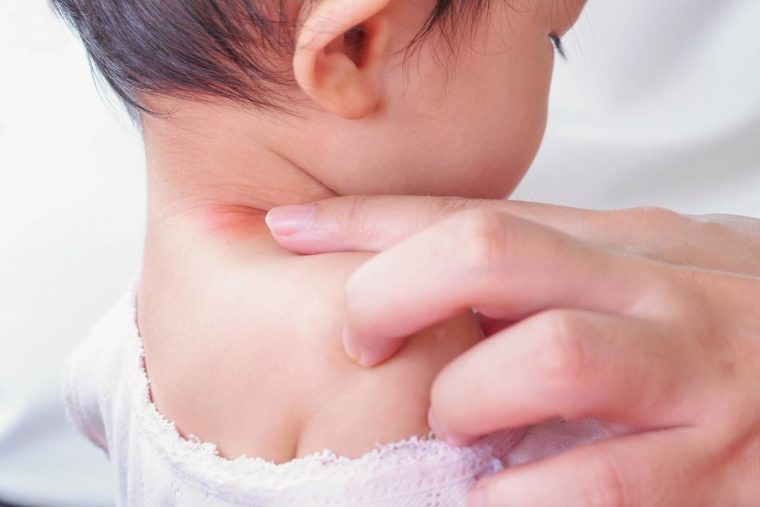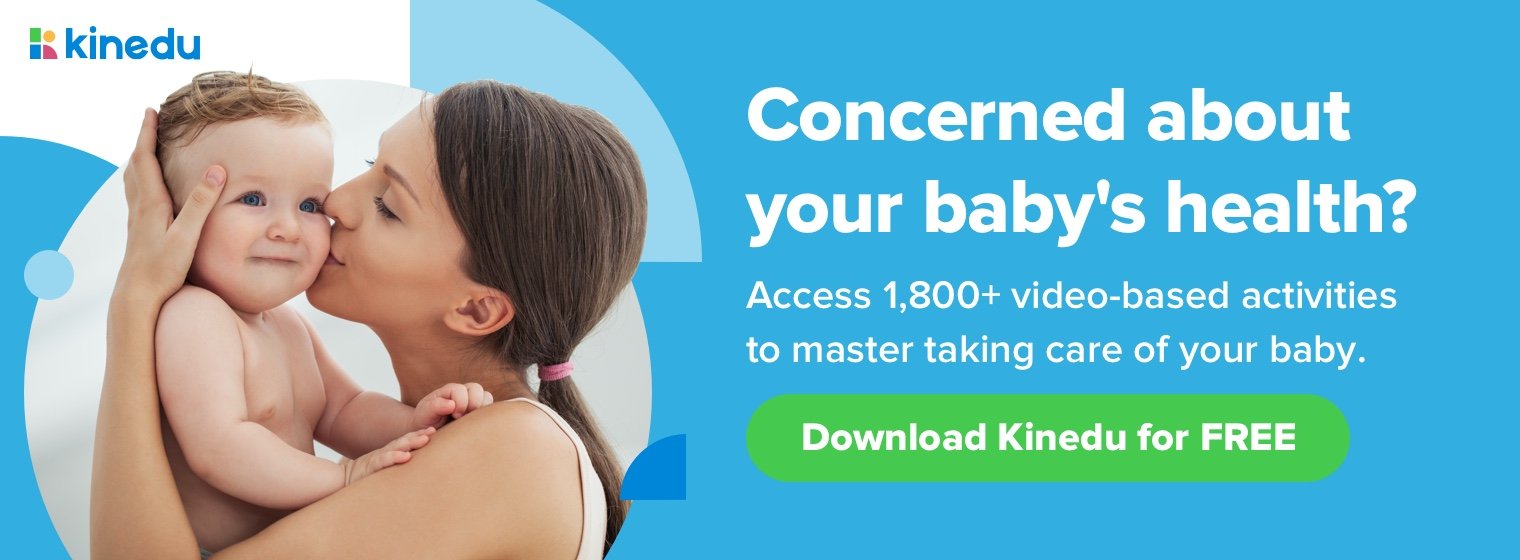Baby birthmarks–or beauty marks as your mother may have so lovingly called them–come in all shapes and sizes.
Although birthmarks are usually not a cause for concern, it’s important to keep an eye on them over time. There are two main types of birthmarks: vascular birthmarks and pigmented birthmarks. Here’s a breakdown of each type.
Vascular Birthmarks
According to the American Academy of Pediatrics (AAP), vascular birthmarks are typically red, pink, or blue. Vascular birthmarks can also be warm to the touch. Those are the main types of vascular birthmarks:
Simple Nevus
Sometimes referred to as the “salmon patch,” a simple nevus birthmark is flat and pink. Marks on the back of the neck are often referred to as “stork bites” and those in between the eyes as “angel kisses.” It’s likely that this type of birthmark will disappear with time. Treatment may be necessary if the mark becomes larger or doesn’t disappear on its own.
Port-Wine Stain
This birthmark can appear anywhere on the face and body. The mark looks similar to a stain and is typically dark red. They are slightly larger than a simple nevus mark. This birthmark is not harmful and is often permanent, but if it becomes large it can be laser-removed. If you notice this birthmark on your baby’s face, consider consulting your pediatrician.
Congenital Hemangioma
The birthmarks occur when blood vessels don’t form as they normally would. They can either be rapidly involuting congenital hemangioma (RICH) or non-involuting congenital hemangioma (NICH). RICH birthmarks disappear quickly after birth whereas NICH birthmarks do not. Treatment is not typically necessary.
Congenital hemangioma marks appear blue or purple and are round or oval-shaped. The marks can be visible as early as in the womb. Sometimes the marks have tiny veins around the affected area.
Infantile hemangioma
These birthmarks are blue or purple when they are deeper in the skin and red when they appear on the surface of the skin. They tend to disappear by age one.
Pigmented Birthmarks
In many cases, birthmarks are caused by additional melanin or abnormal pigmentation. Here are a few types of pigmented birthmarks:
Congenital Melanocytic Nevi
These are small, brown moles that appear at birth. In some instances, congenital melanocytic nevi can appear red, pink, or black and be lumpy, large, and hairy. Although these moles are harmless, it’s important to be aware of increases in size over time. If the moles continue to get bigger, consult your pediatrician.
Café-au-lait Spots Syndrome
These birthmarks get their name due to their coffee-colored appearance. Café-au-lait spots tend to be oval or round and are smaller than a baby’s palm. Although these spots tend to be harmless, if you notice any odd features, like an irregular border or multiple spots in the same region, consult your pediatrician.
Dermal Melanocytosis
These birthmarks are often found on the lower back or buttocks and tend to be brown, black, grey, or blue depending on which layer of skin they are found. Dermal melanocytosis is not harmful and tends to disappear within a few years. In some instances, dermal melanocytosis can be related to a genetic condition.
Pigmentary Mosaicism
These birthmarks tend to be easy to identify because of their unique linear and spiral patterns. Pigmentary mosaicism happens when the skin has two or more different types of cells that result in different colors or pigments. If there is less melanin in the cells, the color will be lighter. If there is more melanin in the cells, the color will be darker.
If the pigmentary mosaicism occurs on a large part of your child’s body, consult your pediatrician. Otherwise, the marks tend to be harmless and don’t require any special treatment.
Remember that taking care of your baby’s skin is an important part of their overall well being. For additional tips about your baby’s health and development, download Kinedu for free.








